Bangladesh’s leather industry has poisoned Hazaribagh and its residents, but they need it to survive.
The odor struck me first: the sulfurous smell of thousands of cow and goat hides stripped bare and left to dry in the baking heat. As my rickshaw drew closer to the village, the driver covered his mouth with a cloth to dampen the stench before approaching the sprawl of houses, shops and leather tanneries. Discarded strips of leather were strewn everywhere on the ground. Bamboo bridges tenuously connected mounds of leather hides that formed islands over pools of toxic chromium-laden azure wastewater. I was in Hazaribagh, a village on the banks of the Buriganga, and the heart of Bangladesh’s leather industry.
The Buriganga River is a central artery of Bangladesh’s capital, Dhaka, one of the most densely populated places on Earth. Hazaribagh, the leather village down the river from Dhaka, means “a thousand gardens,” a reference to the patches of grass floating upon the river’s waters. But today, toxins have pushed aquatic life around Hazaribagh to the brink of survival.
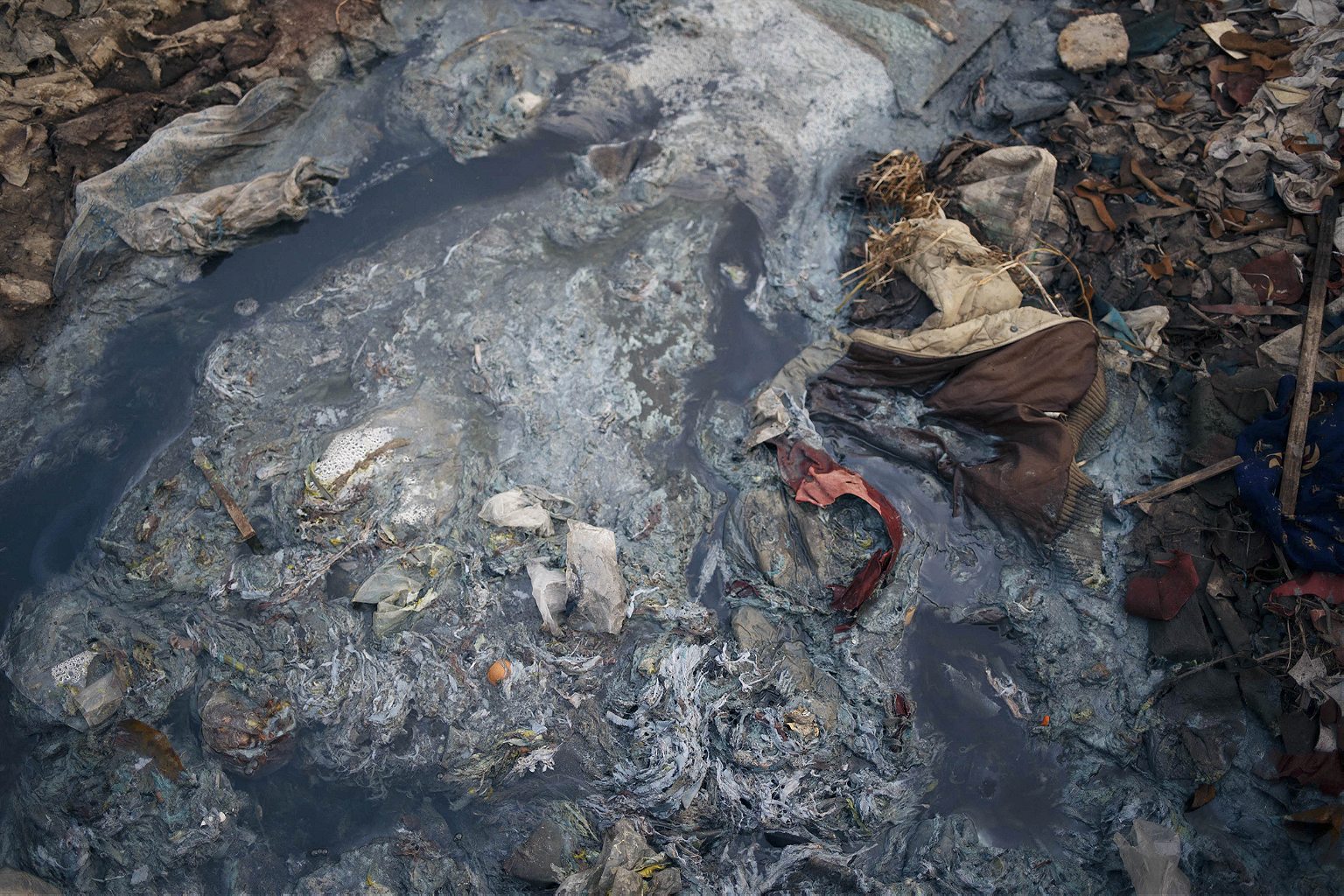
I have traveled to Bangladesh, my parents’ homeland, almost every other year throughout my life, and it remains my favorite country to photograph. Life is so raw, with a spontaneity that an outsider can’t help but appreciate. For locals, that spontaneity has adverse effects: political corruption, sudden labor strikes, hazardous roads and economic uncertainty. The situation in Hazaribagh is emblematic of many of those problems throughout the country. It is a story of corruption and negligence that poisons the veins of the country, and leads to the slow death of the Buriganga River. In 2013, environmental groups listed the tannery site fifth in a list of the world’s most polluted places.
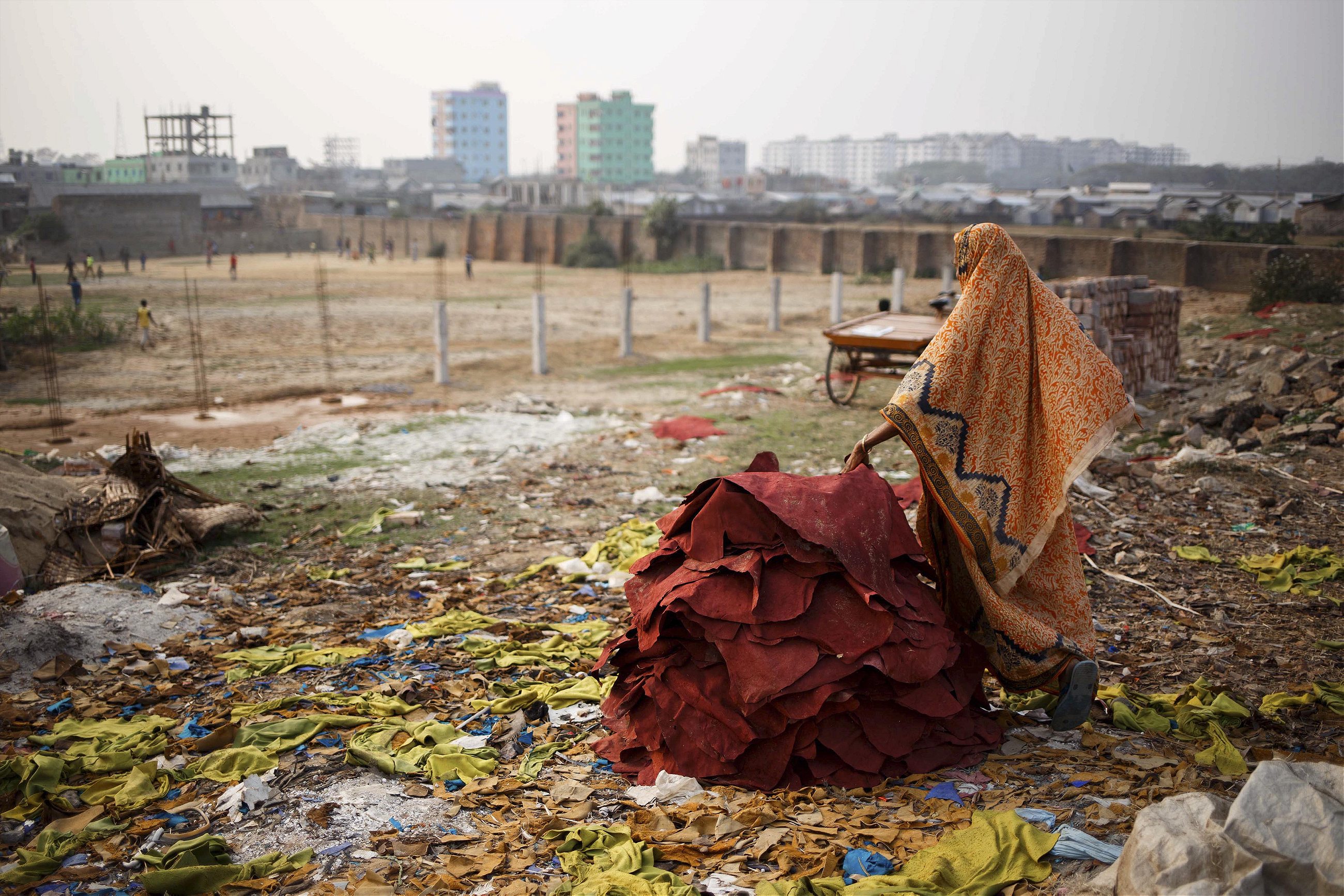
Locals are wary of journalists prying into their village

In January 2016 I spent three weeks photographing the numerous narrow alleyways and outdoor tanneries that make up the village of Hazaribagh. It was a hive of activity with no one seeming to pause for even a second. The buzz of machines slicing leather and the thunder of giant steel drums rotating chemicals to bleach hides filled the air.
Locals are wary of journalists prying into their village and reporting negative stories about the industry, so I knew this project would take some time. As Hazaribagh gained further attention from the media due to alarming studies by the Green Cross and the Blacksmith Institute as well as increased reporting by organizations like Human Rights Watch, pressure mounted on the government to move to a new environmentally-friendly site 30 kilometers away, in Savar. The new location is further afield from the river and equipped with a treatment facility for wastewater. A tannery owner told me he had a different theory: that it was chosen to draw away negative attention from the 2013 Rana Plaza collapse in Savar, where 1,134 people died.
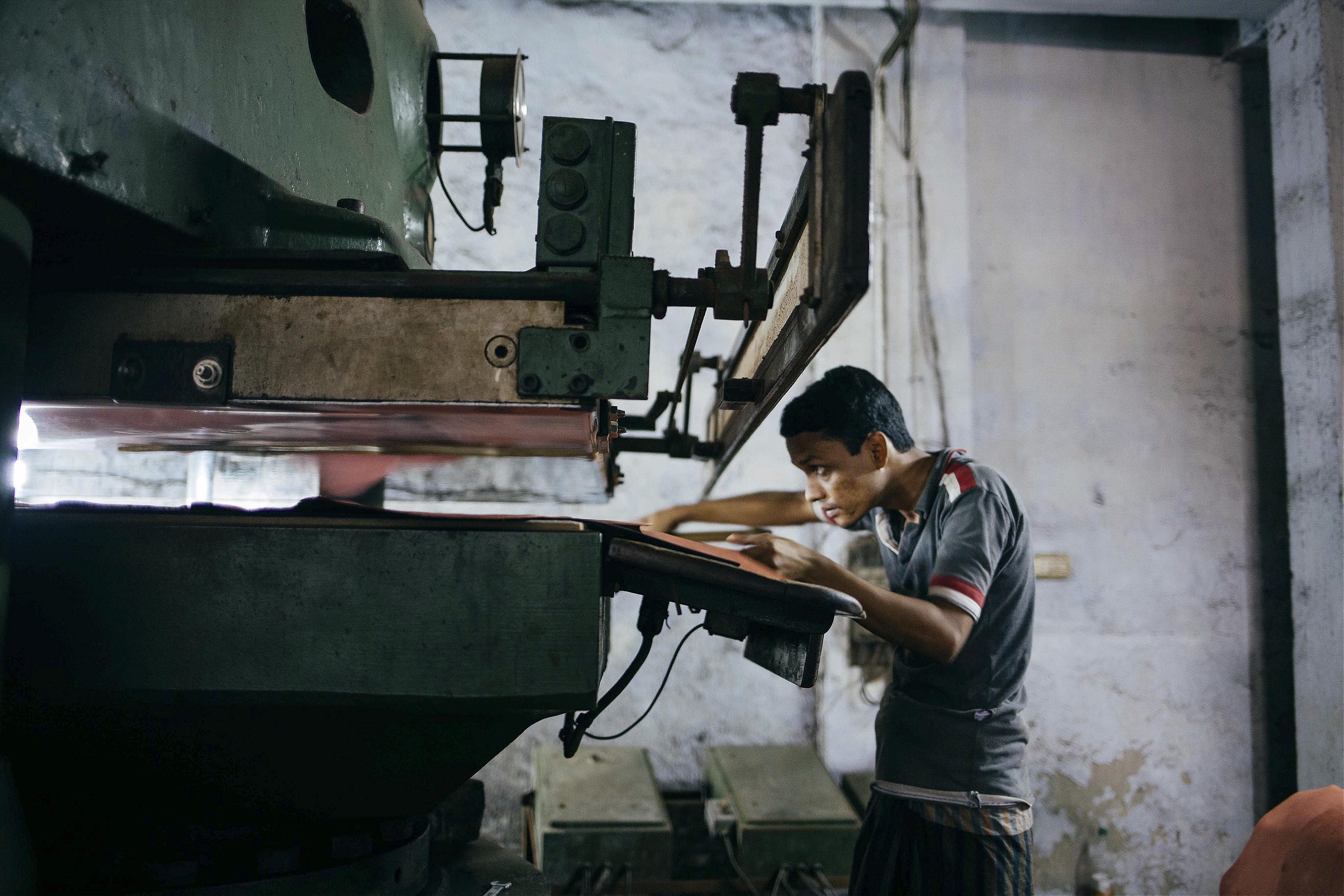
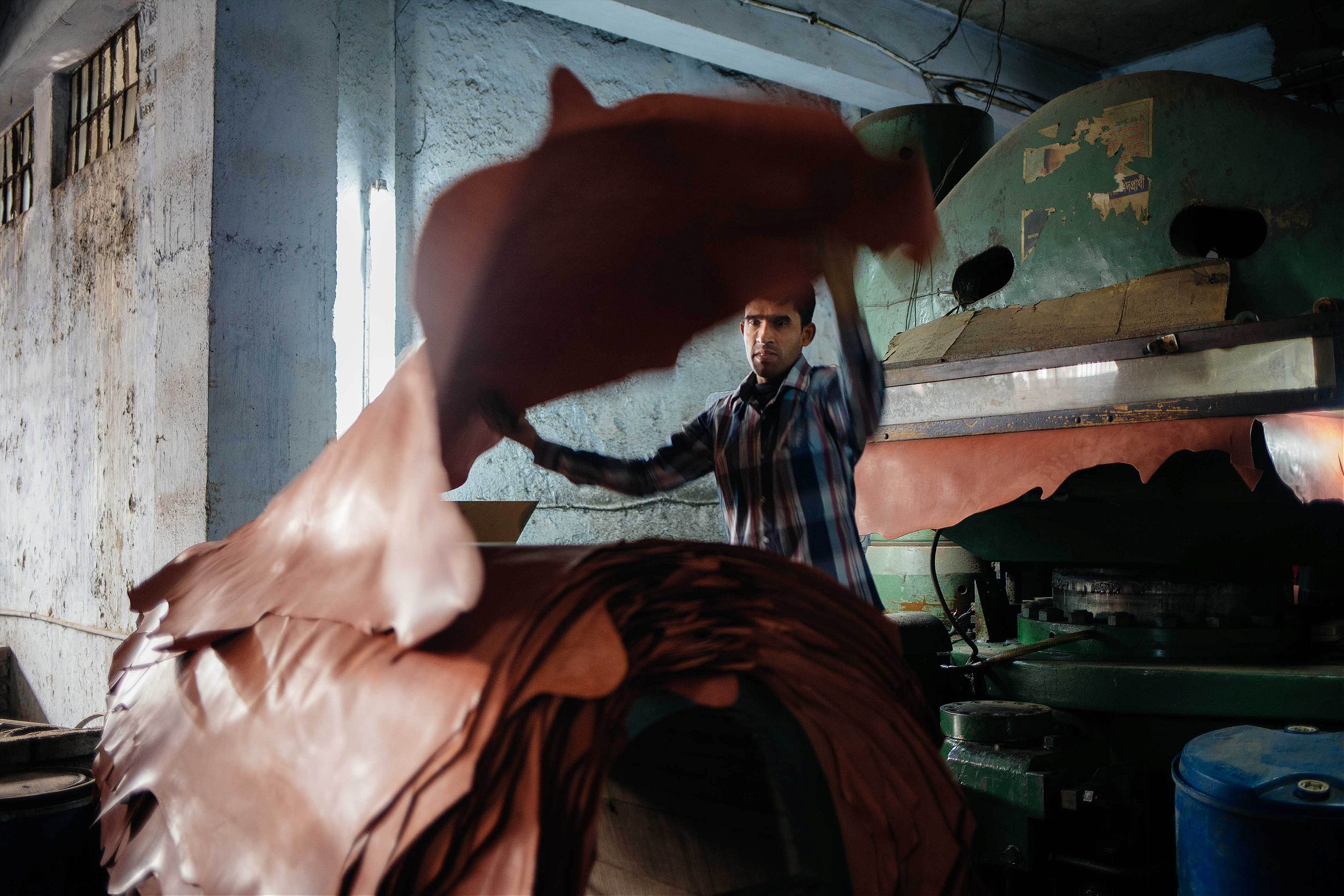
In Hazaribagh’s tanneries, workers handle leather in pits filled with sulfuric acid and sodium sulfide, which can burn tissue, eye membrane, skin, and the respiratory tract. Other chemicals such as formaldehyde are known potential human carcinogens whose effects appear years after exposure. The chromium used in the water to bleach the hairs off the hides is banned in many countries, yet in Hazaribagh you can see men and children working with bare hands. The parts of animals not used for leather—internal organs, hooves and horns—pile up on the side of the road, attracting vermin and disease.

In 2001, a Bangladeshi High Court ruling deemed Hazaribagh a threat to the environment and recognized the hazardous working conditions in the tanneries. The ruling stated that all tannery waste should at the very least be treated using an effluent treatment plant to get rid the contaminants in the water before it’s released into the river. The High Court ruling also ordered the move to the new factory site in Savar to begin immediately. But tannery associations and the government rejected that decision, extending the deadline multiple times to the point where the move is still being debated. The lawyer representing the tannery associations’ claims for an extension is Sheikh Fazle Noor Taposh, the Prime Minister’s nephew. Today, according to a Human Rights Watch report, the government is using the potential relocation to Savar in part as an excuse to not implement environmental laws in Hazaribagh.
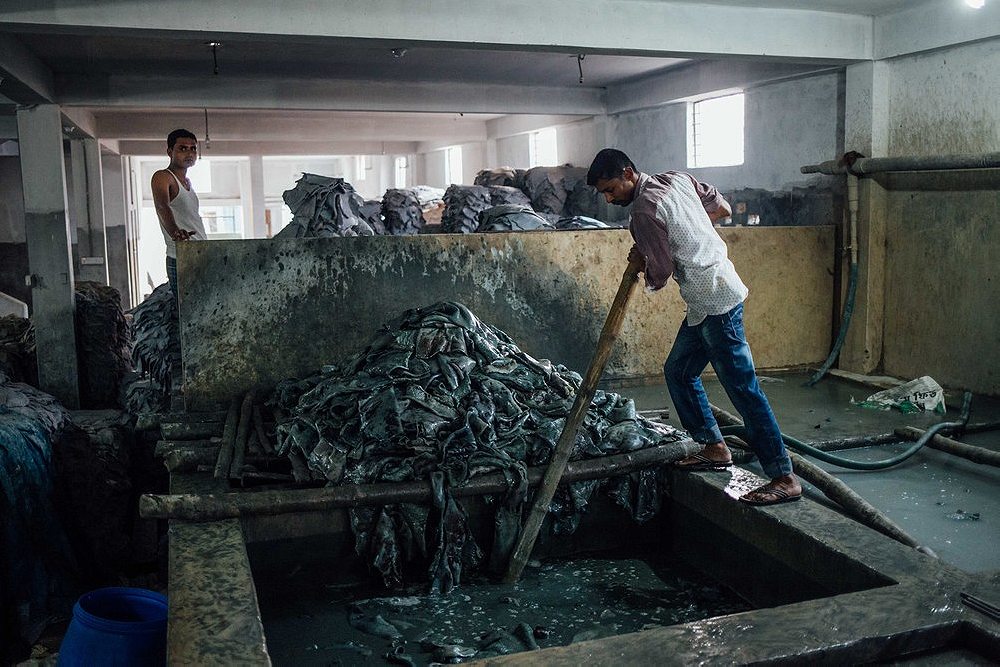
In Hazaribagh, I met Al Amin, a young man who has been working in the industry for a few years. As we conversed, a gush of the chromium blue water jetted down behind us into the sewers. Unfazed, he told me of his uncertainty about finding a job at the new site should the tanneries relocate. The village depends on the leather industry. From June 2011 to July 2012, Bangladesh’s tanneries exported close to $663 million in leather and leather goods to around 70 countries worldwide. Over the past decade, leather exports have grown by an average of $41 million each year. There are few existing alternatives for work in the area.
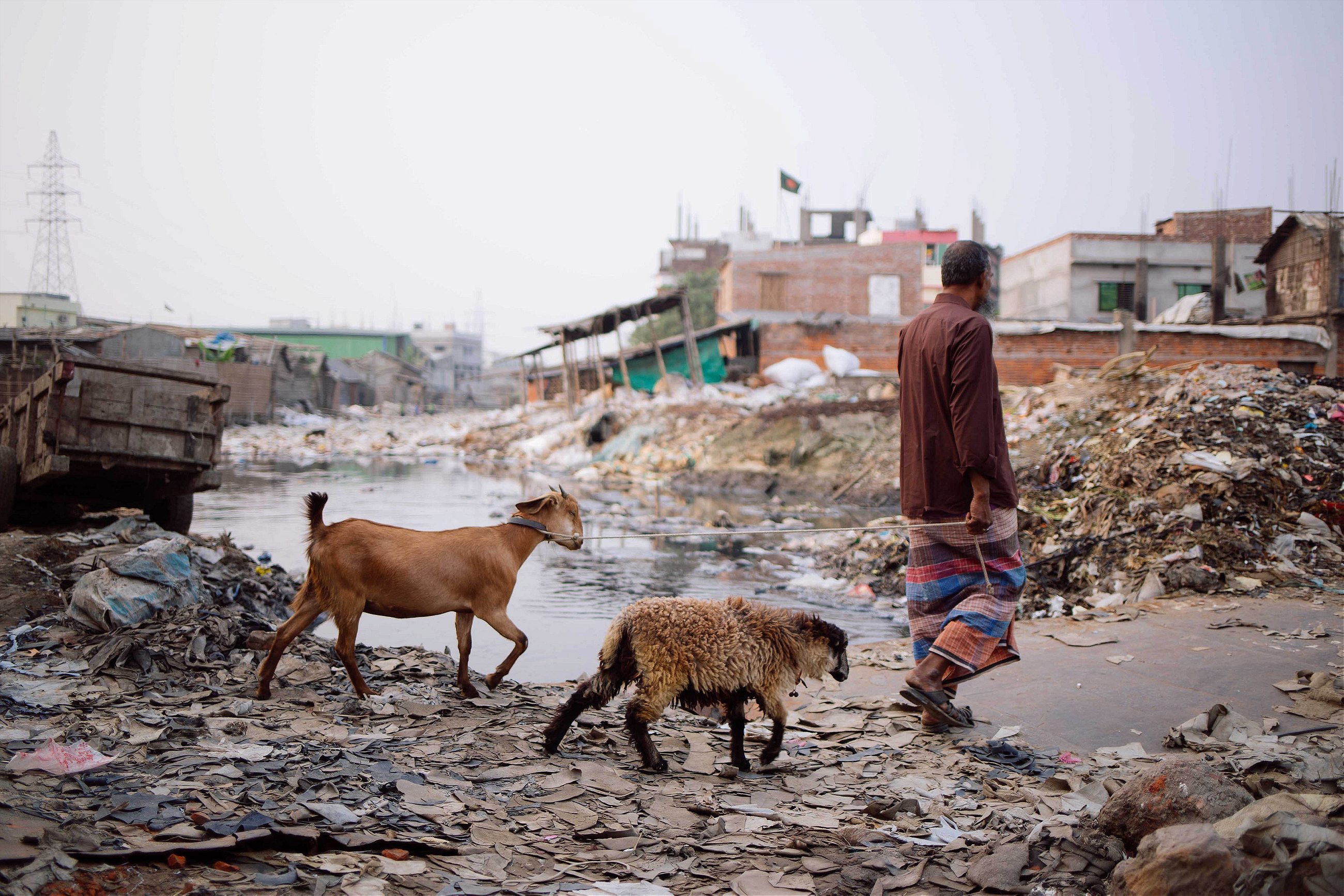
Walking over one of the frail bamboo bridges, I stood atop a floating mass of floating leather hides and talked to a young boy who was playing with a friend, stopping intermittently to rummage through bags of animal skins. The skin islands looked almost comical, as if the animals had been neatly laid out, their skins like clothes to be piled upon others. The young boy, Rohnee, told me he collected horns and hooves that would later be sold for jewelry and furniture. Like Rohnee, many residents depend on the informal economy to earn additional income for their families.
There’s a catch-22 in the potential move to Savar: it could end pollution in Hazaribagh, but it would destroy its economy too. When the factories move, taking the floating islands of leather hides with them, the only thing left will be the dead river.